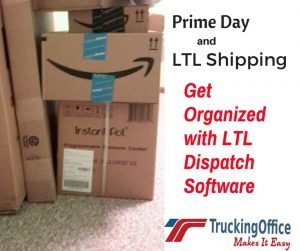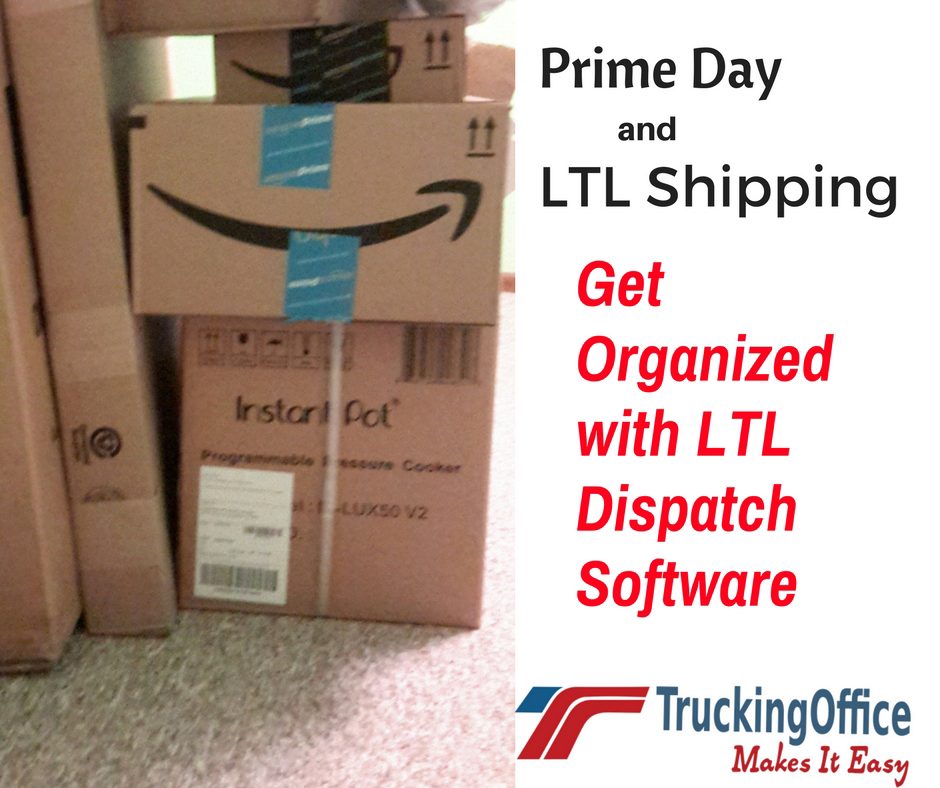Amazon Prime Day was just held on July 11, 2017. Early reports say that Prime Day has officially surpassed Black Friday in one-day sales. I don’t know if that’s true, but it does make one thing clear: LTL shipping is booming thanks to Amazon. How do we manage that kind of freight? You need an LTL dispatch software to make it work.
that’s true, but it does make one thing clear: LTL shipping is booming thanks to Amazon. How do we manage that kind of freight? You need an LTL dispatch software to make it work.
Our LTL dispatch software will give you a fast track into what is perhaps the most lucrative non-traditional market in the transportation industry. With millions of people ordering from online retailers all the time, the need for drivers to transport LTL freight has never been greater. But to take advantage of this exploding segment of the economy, you need TruckingOffice LTL dispatch software in your corner. It will arm you with the tools you need to make big money with little loads.
What Is LTL Trucking?
LTL stands for “less than truckload.” It refers to shipments that weigh less than the standard 10,000-pound-plus weight class most truckers are familiar with. These shipments can fill up anywhere from a single pallet to 50 percent or more of your trailer. By delving into this market, you’re filling a critical niche between the average long-haul trucker and your neighborhood UPS driver. LTL trucking is a great way to supplement your regular revenue streams. It also offers a change to the monotony that sometimes characterizes the average workday of an FTL driver. LTL truckers use smaller trailers, deliver to multiple locations in a day, and may find that they can visit home more often.
In short, LTL loads represent a way to boost your income and improve your overall quality of life. Taking advantage of this expanding market, however, requires having the right LTL dispatch software. That’s where TruckingOffice comes into the picture. Our product offers essential features like these:
- The ability to dispatch loads for either a single customer or multiple clients, depending on changing conditions.
- Automatic bill calculations that take the hassle out of invoicing clients.
- Added features that enable you to use the space in your trailer for greatest efficiency, slashing delivery times and saving you from needless labor.
How You Can Benefit From LTL
Are you weighing the pros and cons of LTL driving? Of course, LTL shipping has many advantages for shippers and customers as well. But, what about drivers or owners/operators? Let’s take a quick look at some of the advantages and disadvantages that you should consider:
Advantages of LTL shipping:
- Can prevent dead-heading.
- Better for the environment.
- Frequent deliveries allows drivers to get out of the truck more often.
- Many LTL destinations are local, allowing drivers more time at home.
- Goods are often shrink-wrapped on a pallet making them more secure.
Disadvantages of LTL shipping:
- Multiple deliveries can result in problems with being on time.
- Freight often has to be moved around often and drivers can be blamed for damages.
- The freight may be exposed to several different people who load and unload and can increase the odds of losing some of the freight.
The choice between LTL and FTL will most likely be influenced by the type of freight and your flexibility. Although LTL freight is generally more cost-effective, it’s best to look at shipment methods on a case-by-case basis to decide which is the best way to go.
When you’re ready to decide, be sure to check out our FTL dispatch software to learn why you’ll want TruckingOffice riding shotgun with you.







Recent Comments